
By Jill Heinerth, Underwater Videographer - www.IntoThePlanet.com
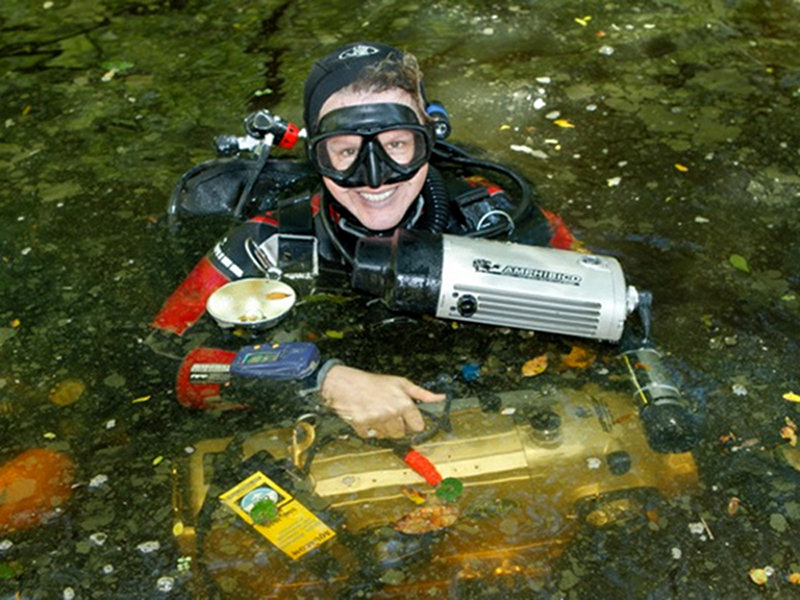
Jill Heinerth with an HD camera in Amphibico housing preparing to dive during a BBC Shoot for the program Naked Earth. Image courtesy of Anthony Lenzo, Bermuda Deep Water Caves 2011 Exploration, NOAA-OER. Download image (jpg, 138 KB).
In the late 1980s, photographic equipment manufacturer Canon, created a company division called “Still Video.” They introduced some of the first digital cameras in the industry. When these cameras were released to professional news photographers, many people debated whether they would be accepted by traditional media outlets. Concerns about overzealous editors manipulating images led to serious concern about whether newspapers and magazines would ever accept a digitally produced photo as authentic. However, the ease of capturing and editing digital images soon convinced industry skeptics that digital photography was here to stay. Before long, companies such as Apple, Nikon, Kodak, and Sony offered consumer-level digital cameras to an eager public. Their ease of use, improved optics, and instant visual gratification accelerated their acceptance among hobbyists and professionals alike.
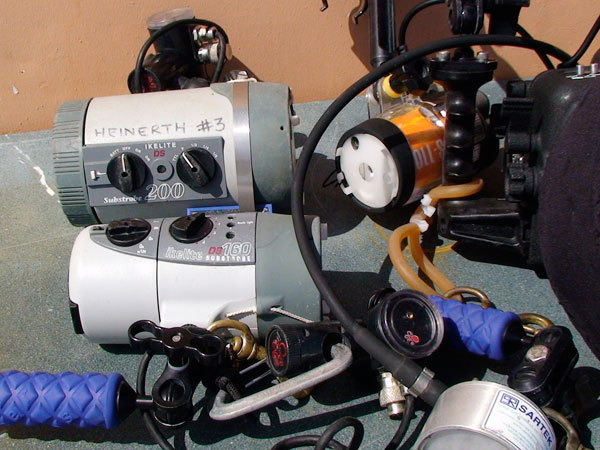
Image illustrates the four strobes used in cave and underwater images taken by Jill. Image courtesy of Bermuda Deep Water Caves 2011, NOAA-OER. Download larger version (jpg, 2.7 MB).
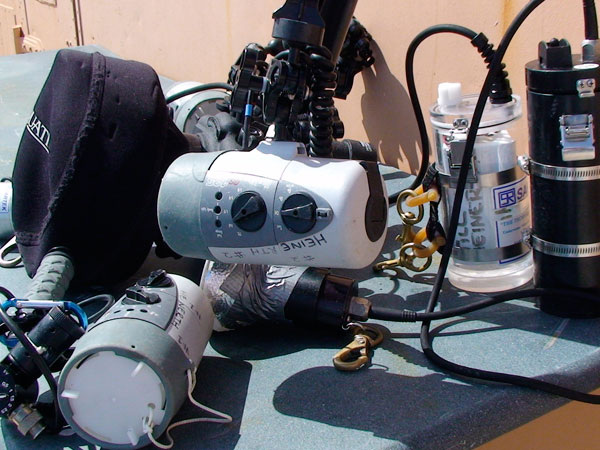
Additional arsenal of strobes and UW lights. Image courtesy of Bermuda Deep Water Caves 2011, NOAA-OER. Download larger version (jpg, 2.6 MB).
Digital cameras closely resemble their precursor, film cameras. The biggest difference between a film camera and a digital camera is how the photograph is stored. A digital camera stores photos on a media card that can be bought in various sizes. Media cards offer considerably more storage than conventional rolls of 35mm film, which usually limited shooters to no more than 36 frames before changing film. A digital photographer can take up to hundreds of shots and edit them on the fly, discarding and overwriting lesser quality images. This has tremendous advantages for photographers working underwater in extreme environments. Prior to the current technology, frequent film changes meant ending the dive to reload in a dry environment.
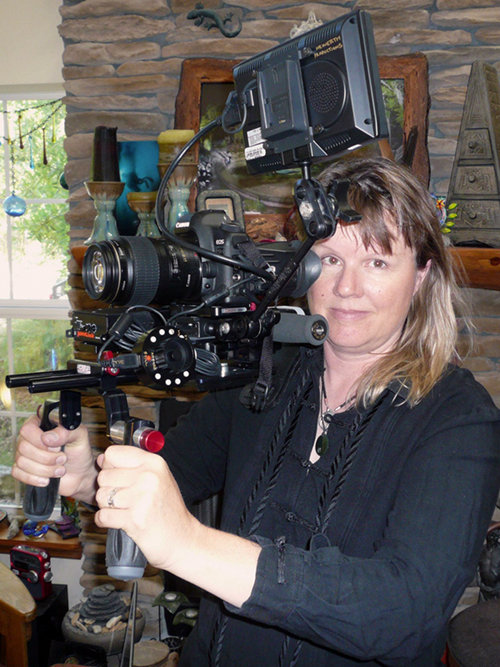
Jill's custom HDSLR rig as it will be used topside during the Bermuda project. Image courtesy of Bermuda Deep Water Caves 2011 Exploration, NOAA-OER. Download larger version (jpg, 2.0 MB).
The newest generation of digital cameras are called HDSLR cameras. These cameras allow the photographer to capture both high resolution stills and video footage in the same camera body. Still in their infancy, these cameras are rapidly improving in both resolution and features. Most current HDSLR cameras require the operator to control many functions, such as focus, manually. This adds to the task load for the underwater photographer.
The exploration of deep oceanic caves presents some significant challenges for a photographer. One of the goals of the project includes capturing video transects in the 400 fsw range as well as still photography on the same dive. Missions in this range carry significant risks for a diver and therefore the number of dives are minimized as much as possible. In choosing a camera system, several factors were considered:
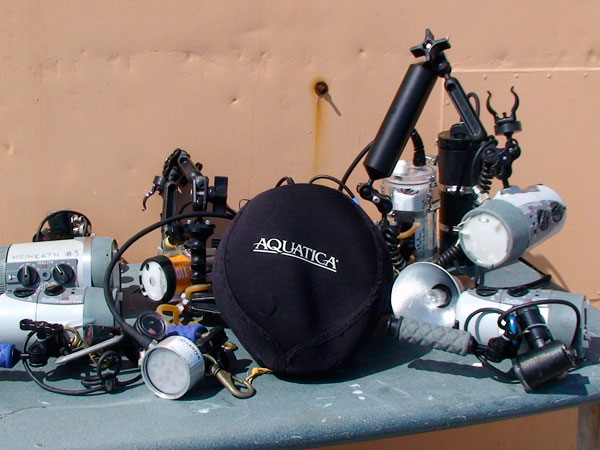
Complete UW equipment that Jill Heinerth will use on this expedition. Image courtesy of Bermuda Deep Water Caves 2011, NOAA-OER. Download larger version (jpg, 2.5 MB).
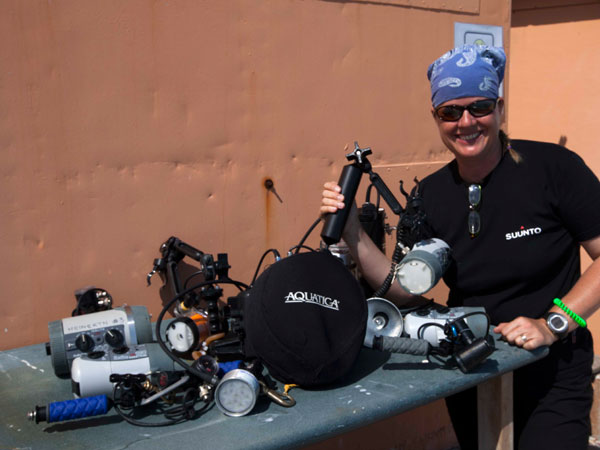
Jill posing with her UW gear prior to a dive. Image courtesy of Bermuda Deep Water Caves 2011, NOAA-OER. Download larger version (jpg, 2.3 MB).
Very few options exist for a diver wishing to shoot both stills and HD video in the same housing. In order to meet the above parameters, the following package will be utilized:
Files are captured on high capacity, high speed Compact Flash memory cards which are later uploaded to an Apple MacBook Pro computer. Video files are transcoded, backed up to hard drives and edited using FinalCut Pro software. Still photos are managed with Abode Lightroom software and edited using Adobe Photoshop CS5 Extended. The final products of these dives will be used by scientists to analyze data and selected imagery will be displayed on this website. Complete archives will be made available for scientists and the general public through links posted on www.IntoThePlanet.com .